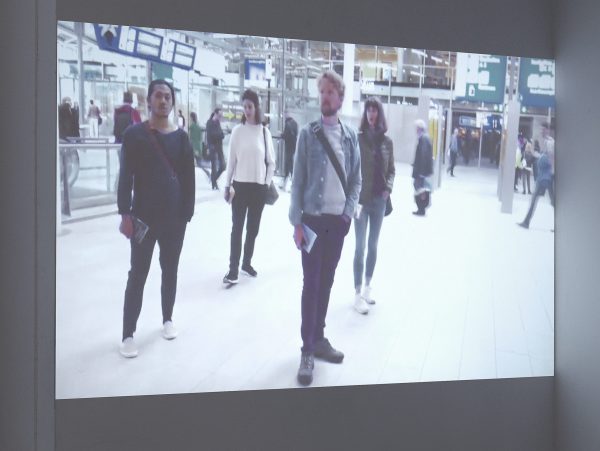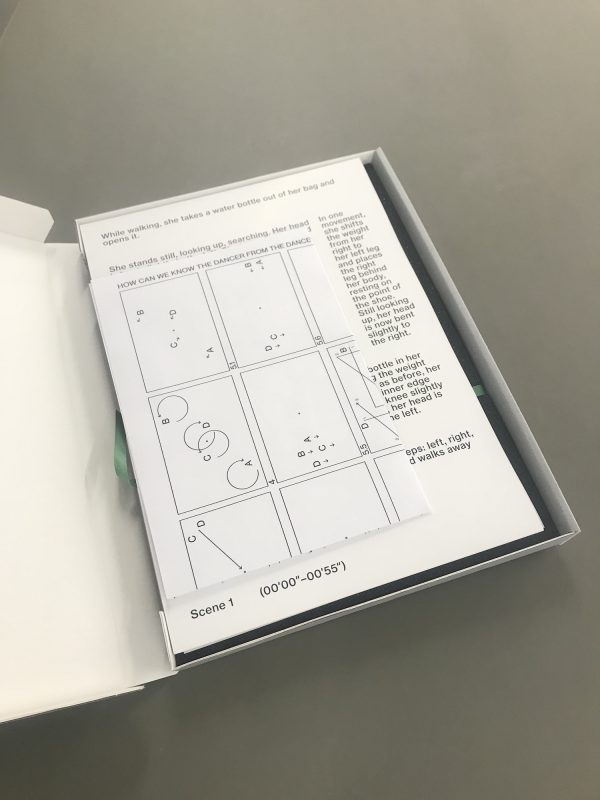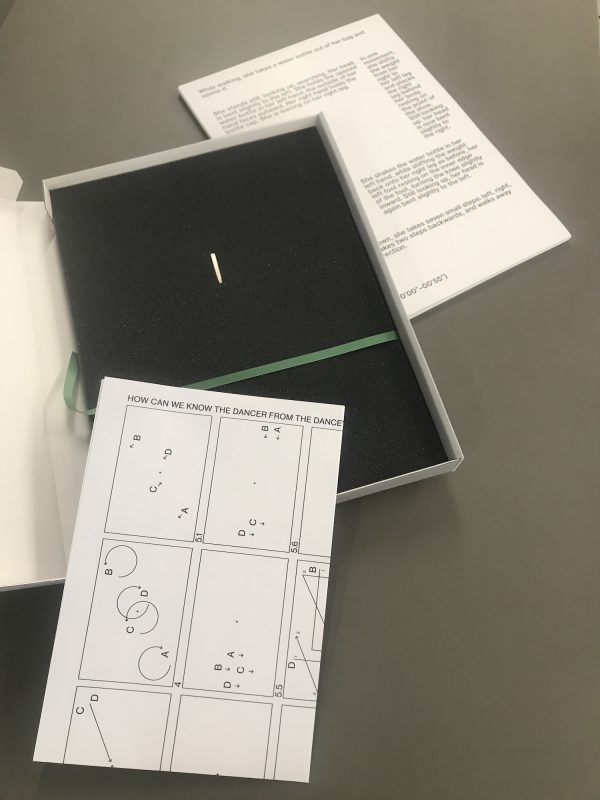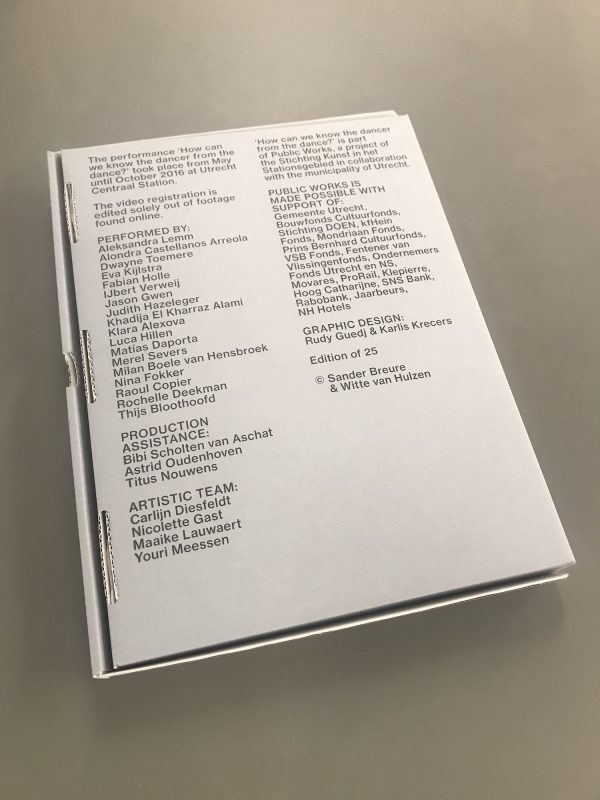Sander Breure & Witte van Hulzen – How can we know the dancer from the dance?, 2016
€2,075.00
Sander Breure & Witte van Hulzen
How can we know the dancer from the dance?, 2016
video 25′, Mpeg-4, 1280 x 720, stereo sound
script, inkjet on paper, 40 pages, 29 x 42 cm
40 x 12.5 x 9.5 cm
edition 25 + 2 AP
9% BTW included
In stock
Description
The single screen video How can we know the dancer from the dance? , 2016, by Sander Breure & Witte van Hulzen, is a reconstruction of the performance with the same title, that was performed during half a year (786 hours) on working days, at Utrecht Central Station in 2016. It was edited solely out of online found footage. Discernible throughout the multi-disciplinary work of Sander Breure and Witte van Hulzen is their fascination for the human condition: the behavior of people, the encoded structures in that behavior, the influence of time and place on the relationships between people. This interest becomes visible not only in their performances, but also in their video work, photography, sculptures, installations and drawings. For the performance How can we know the dancer from the dance? four performers were present daily among the crowds of people thronging through the station. These performers did nothing to stand out in the crowd, in fact they behaved exactly like everyone else: taking a sip from a paper coffee cup, checking the news on their phone, or just ambling around aimlessly, waiting for a friend to show up. Only, they did so all four at the same time, in perfect synchronicity. This synchronous choreography of everyday movements is based on a large video archive of behavior at that same station. The scènes selected from this extensive study of body language were copied until the last detail in a month long rehearsal process. This procedure gives the performance a documentary quality – all scenes are based on real life events – but also a richness of information that can only come from the densification of reality. It is grounded in the idea that that which surrounds us everyday, that which we find boring and normally don’t notice, can actually learn us a lot when we take a closer look. The performance had to be individually ‘discovered’ by the audience. The spectators at the station stood still and watched because they noticed something, not because a sign or booklet told them to do so. People that walked through the group of actors without having noticed the performance became part of the performance. With a minimum of means, a theatrical space was created.





